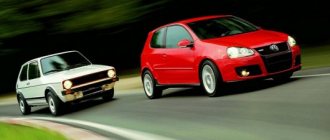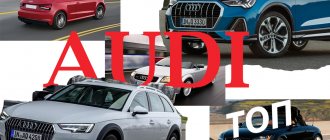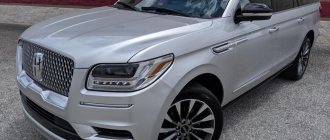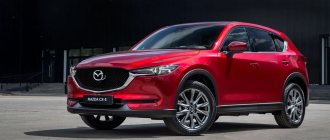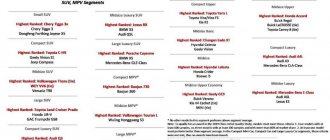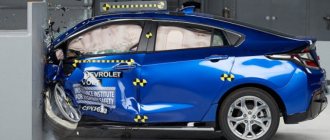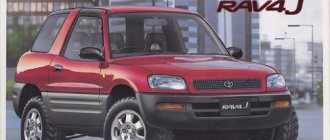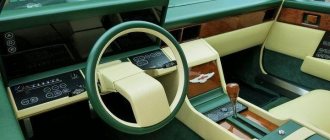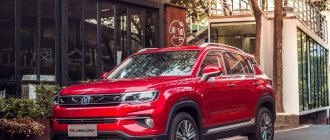Brands officially sold on the Russian market
Toyota is the undisputed leader in Japan, the Asia-Pacific region and one of the global leaders in the automotive industry.
Widely known for its passenger cars. The range is unusually wide and includes hundreds of models and modifications, many of which are specially produced for one specific market. Since 2007, it has its own car assembly plant in the Russian Federation. Lexus is a division of Toyota that produces premium cars. Initially, the products were aimed at the US market. In the 90s, cars began to be supplied to Europe, and since 1998 to Russia.
Hino is a division of Toyota that produces passenger buses and trucks. Recently it has its official dealers in Russia. Before this, only used trucks from Japan were imported into our country, surprising Russians with their original designs and unusual engineering solutions.
Nissan is the second largest automobile company in Japan, after Toyota. It is world famous for its cars, and in Asian countries also for trucks and buses. Since 1999, a controlling stake in Nissan was sold to Renault, after which both companies headed for the unification of their cars. Since 2009, Nissan has opened its own car assembly plant in Russia.
Infinity - in the eighties, Nissan, like Toyota, registered a separate brand to produce premium cars for the US market. Subsequently, Infinity cars gained recognition in Europe and Russia. All produced sedans, coupes and crossovers are built on the same Nissan FM platform. SUVs and pickup trucks also have a single platform, but are produced exclusively in the United States.
Honda is the third largest Japanese manufacturer of passenger cars and motorcycles. Until 1960, it produced exclusively motorcycles. She got involved in cars contrary to the interests of the Japanese government, and she made the right decision. After the 1973 fuel and energy crisis, Honda's fuel-efficient cars quickly became top sellers in the United States and then in Europe.
Isuzu is a company well known in Russia in the 90s. Since the early 2000s, it gradually began to withdraw from the passenger car market, focusing on the market of trucks and diesel engines. The oldest automobile corporation in Japan does not currently produce passenger cars, but it occupies a leading position in the world in sales of trucks and diesel engines. In 2008, assembly production of light trucks was launched in Russia.
Mazda is a popular brand of passenger cars in the world. It works closely with Ford, thanks to which many models from both companies are produced on a single platform. The only one in the world that produces cars with rotary piston engines. Since 2012, it has its own assembly production in our country.
Mitsubishi is a widely known automobile company in Russia from the Land of the Rising Sun. Until the end of World War II, it produced exclusively aircraft, mainly military ones. After 1946, in addition to the production of cars, it was engaged in mining, telecommunications, financial services, construction and insurance. In 2010, it launched production of its trucks and crossovers in our country. Leader in sales of projection equipment in Russia.
Subaru is Japan's original automobile company. In addition to the unusual design of its passenger cars, they are all equipped with boxer engines. Apart from Subaru, the only company in the world that uses boxer engines is Porsche. Like Mitsubishi, it is widely known for its success in motorsports, especially in rallying.
Suzuki is a Japanese car. All Suzuki models are quite simple in design and affordable. Thanks to this, he has a large number of fans in Russia and other countries. Works closely with Fiat and Chevrolet concerns. Also widely known for its motorcycles.
Right-hand drive cars imported from Japan are extremely popular in the Far East. According to statistics, in this region of Russia the share of right-hand drive Japanese cars exceeds 57%.
Honda CR-V
The Japanese car is one of the best options on the secondary market. It is capable of covering 300 thousand kilometers without problems or major repairs.
Despite the rather large dimensions of the body, the car is easy to drive thanks to its convenient all-wheel drive.
One has only to note that the model is not flawless: the 2-liter engine develops vibration quite quickly, and the brakes require increased attention from mechanics.
Japanese brands not sold in Russia
Scion is a division of Toyota Corporation, narrowly specializing in the production of cars for American youth.
The products are manufactured and sold only in the United States and are unknown outside that country. Daihatsu is another division of Toyota, focused on the domestic and European markets. It produces mainly small cars and crossovers of the subcompact and compact class. They are not officially sold in Russia, but are known to car enthusiasts thanks to unofficial “gray” dealers.
Acura is the North American division of Honda, focused on producing premium cars in and for the US market. Has some popularity in Europe. They were imported to Russia exclusively by “gray” dealers, but from 2014 it is planned to open official representative offices.
Dome is a little-known Japanese sports car manufacturer. Until 2000, he took part in Formula 1 racing. Currently, it carries out orders for the construction of racing cars for the 24 Hours of Le Mans.
Datsun is a Japanese automobile company that produced passenger cars from 1933 to 1986. In 1986, it was absorbed by the Nissan corporation and ceased to exist as a brand. Since 2012, it has been revived as a brand producing budget cars for developing countries. In the near future it is planned to open sales in Russia. Moreover, the cost of cars will be comparable to AvtoVAZ products.
Toyota Sienna
Toyota Sienna is a minivan that has won the love of large families.
The rear doors of the Toyota Sienna slide easily and then you can safely seat children on the spacious sofa. And if you fold it, you can load a lot of luggage. No matter what you need to haul, this minivan will do the job. In addition, the car is all-wheel drive, which makes it even more useful. It will “live” for a long time and, in general, the Sienna is one of the “longest-lived” minivans on the market.
The most reliable cars - the Japanese are ahead of the rest?
Determining the most reliable car is not the easiest task. Because there are no objective criteria or tools for this. A more or less reliable picture (although there will certainly be some exceptions) can be provided by various statistical surveys, samples and reports from auto analysts.
On the other hand, the statement “there are lies, there are blatant lies, and there are statistics” also, it seems, has not been canceled. Indeed, having compiled several fairly fundamental statistical works, one can draw one very simple conclusion: the most reliable cars are Japanese.
In the UK, The MoneySuperMarket Group operates quite successfully - its specialist analysts, in a nutshell, help residents of Foggy Albion save money. On shopping, travel, smart investments - in general, on everything.
In particular, their MoneySuperMarket project was noted for its enormous research on the topic “let’s determine the most reliable car.” Analysts collected information on the frequency of breakdowns, complaints from car owners and the cost of repairs. After analyzing and calculating, the researchers came to a clear conclusion: the most reliable cars are Japanese!
The TOP 10 models included the revived mini-crossover Honda HR-V, Suzuki Alto, Toyota Corolla, Suzuki Ignis, Honda Jazz and Mazda 2! Although, at the same time, the Korean Kia Picanto and Vauxhall Agila - British Opel became the champion and vice-champion of the reliability rating.
The most reliable cars - history
Previously, the Japanese were distinguished by similar behavior - Toyota Carina (the same Corolla, only in profile), Mitsubishi Galant and, if you're lucky, the 626th Mazda. And the Germans, especially the 190th “gelding”, were also distinguished by their amazing unpretentiousness - and occupied the first places in the car reliability rating a dozen or two years ago.
Actually, this is where the stories and legends about the “unkillable Japanese” came from in our latitudes (they sounded something like this: I bought a used one for three and a half thousand dollars, drove for three years, didn’t change anything, and also sold for three and a half thousand dollars).
Or about the “unkillable German” - in his role, in addition to the above-mentioned “gelding”, the diesel BMW 3 Series could also appear. But then, around the Millennium (although, if you believe seasoned auto mechanics, even earlier), this is what happened: automakers secretly began to artificially reduce the service life of cars. Although the guarantee for through body corrosion or problem-free mileage remained the same, or even more.
But if earlier the most reliable cars with the brand “Made in Japan” or “Made in Germany” calmly ran for two hundred thousand kilometers, and no one paid much attention to the mileage guarantee - half as much - then everything changed.
The reliability of cars has decreased: the next generations of cars have become more “pampered” - thinner metal, more plastic and capricious electronics. And if, for example, the indestructible Land Rovers from the 50-70s of the last century are for the most part still on the move (as are the Rolls-Royces - one of the leaders in the car reliability rating of all times), then With today's cars, even if you wanted to, you couldn't say that.
The most reliable cars are those that are looked after
Of course, reviews and studies supported by a serious statistical base are certainly great. But at the same time, we should not forget about one more very important detail: even the most reliable car requires proper care and competent maintenance.
Naturally, some machines were initially designed with a large margin of safety and for operation in difficult conditions. But all other things being equal, it is quite possible that a modest office worker Volkswagen Golf with proper care in terms of functional readiness will not be inferior to the brutal Land Rover Defender all-terrain vehicle or a replica retro jeep Toyota FJ Cruiser.
However, perhaps Russian car enthusiasts have a slightly different opinion - and they may well consider the most reliable cars to be the good old UAZs (including the revived model 469-B), the well-proven family-commercial Lada Largus, or the eagerly awaited new Lada Vesta. Not to mention the more “older” models.
The situation is approximately as follows: UAZs are not afraid of minor breakdowns, VAZs are easy to repair, but you can only believe in the new products of the Russian automobile industry. If, of course, you take care of them with special, increased care.
Useful article as a continuation:
Take it for yourself and tell your friends!
Dragons
The first Japanese postage stamps were printed in April 1871. The series includes 4 miniatures of different colors and denominations:
- 48 mon – brown;
- 100 mon – blue;
- 200 mon – red;
- 500 mon – green.
Denominations are indicated in black hieroglyphs. The name of the country was not on the stamps; all inscriptions were in Japanese. The design on all miniatures is the same: two dragons look at each other, their silhouettes are framed by floral patterns.
There are several versions explaining the choice of design. According to one of them, the choice fell on the dragon, since its figure was depicted on the money of those years. According to another version, the dragon decorates postage signs, as it is a symbol of power, love, and wisdom in Eastern mythology.
Two grades of high-density paper were used to print the edition. All copies included in it were engraved and printed by hand. Two boards were used for printing, so there are several varieties of this series.
Mid-size Lexus GX
If you look at the evolution of SUVs, it becomes clear that the first models were characterized by simplicity of design and a minimum of comfort. Power, strength, maneuverability are the three main principles in design and production. Systems and mechanisms to ensure safety and comfort for passengers were introduced slowly but consistently.
The Lexus GX SUV is one of the modern vehicles that appeared on the market in response to consumer requests. For this purpose, the principles of unification and standardization began to be applied in the production of off-road vehicles.
A unified frame structure made of special tensile steel is used as a platform for several models. All-wheel drive and permanent drive ensures high stability of the Lexus on steep slopes, turns and ice.
It is important to note that the exterior of the SUV can be easily updated
. This is what designers do all the time. At the same time, its driving performance does not change. The length of the car is 4806 mm, width is 1886 mm, ground clearance is 215 mm. Safety and climate control systems meet current standards for vehicles in this class.
Full size Mitsubishi Pajero
Pajero is equipped with a permanent and all-wheel drive mechanism. The high driving characteristics of the jeep are convincingly confirmed by the results of various tests and prizes in off-road racing. The SUV has more than a dozen titles awarded to it as a participant in the Paris-Dakar rally.
Mitsubishi Pajero is assembled on a durable platform, which provides the longest MTBF when operating in Russian conditions. Some owners claim that the SUV “doesn’t break down” at all. On the market you can purchase a model with both a gasoline and a diesel engine.
Experts note that the exterior of the SUV changes little over time and retains previously acquired features. Conservatism in design creates the impression of constant reliability and gives confidence to the driver.
Machine length - 4900 mm, width - 1875 mm. The jeep easily overcomes water obstacles up to 700 mm deep. The interior contains the necessary options and systems for such a car. Almost all owners note the convenience of the driver's seat, which provides an overview of the road situation, and easy access to the control panel. The rear row of seats folds easily when you need to increase trunk space.
Nissan
Nissan car
Due to environmental friendliness, comfort, minimal fuel consumption and reliability, many car enthusiasts prefer the Nissan brand. In this case, you don’t have to worry about buying auto parts or finding a service. The fact is that the corporation personally produces more than five thousand parts, and the company’s official services can be found in any convenient place.
But the most important thing is the quality of the car. This is the main reason for purchasing the Nissan brand. The models Cedrik, Laurel, Skyline have been recognized as the best in recent years.
Koban
The Koban is an oval-shaped Japanese coin that was in circulation until 1868. When the standard series with an oval-shaped inner frame was released in 1876, philatelists called it “Koban”.
The design of coins and stamps was carried out by the Italian sculptor, artist and engraver Edoardo Chiossone. The government of the country invited him to the position of director of the Printing Bureau.
The Koban series is made using relief printing technology. In the center is a drawing of gold coins of the same name. For the first time, the phrase “Japan Post”, written in Japanese, appeared on payment signs. "Koban" was produced in 1876-1899.
